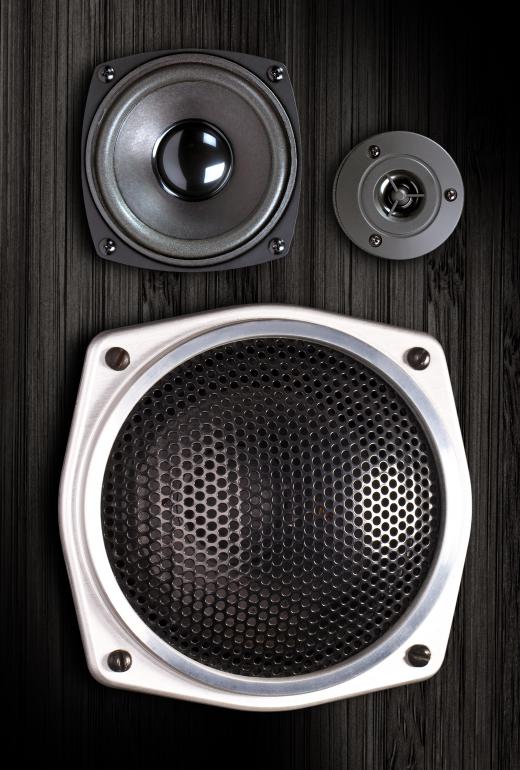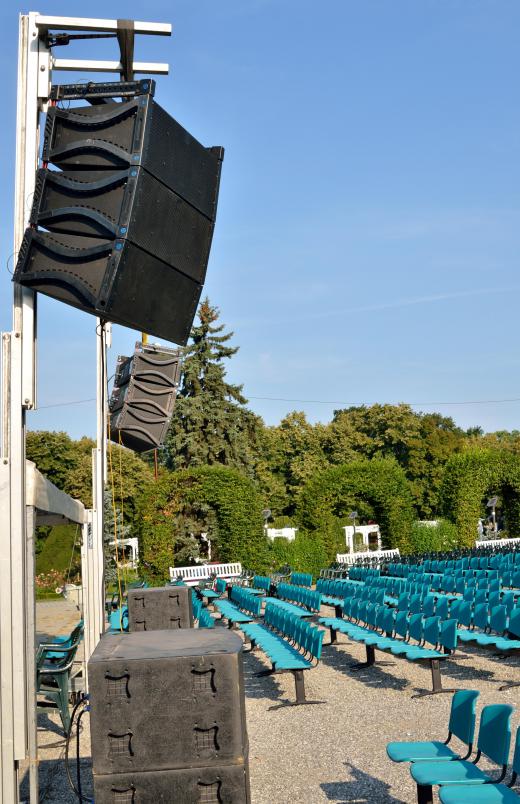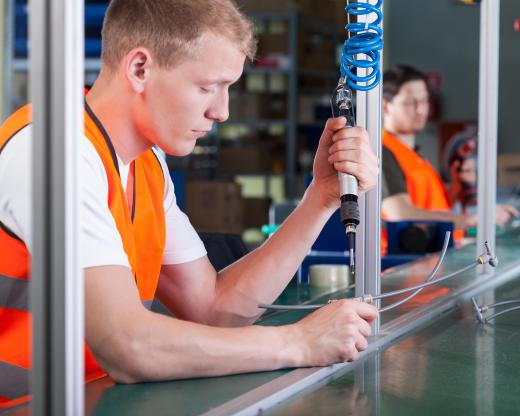A coil actuator is an electromagnetic device that moves objects at high speeds and stops on demand. Coil actuators come in varying types and sizes for different automated tasks; they can be heard vibrating at high speeds, producing the sound waves in loudspeakers, and acting as the little electric motors that move the disc heads in a computer hard drive. Coil actuators are used in a wide variety of tasks in consumer electronics, manufacturing assembly lines, and medical equipment to rapidly position movable objects in precise locations on programmed demand.
The simplest type of coil actuator is called a voice coil actuator, a linear actuator that moves objects back and forth in a straight line. A voice coil actuator has opposing magnets in exact opposite north-south polarity with a magnetic field between them. Alternating current along a metal coiled wire between the magnets produces a force capable of moving objects back and forth through the magnetic field, according to polarity shifts, as the magnets alternate in attracting and repelling each other. Rotary or swing-arm coil actuators have the same general operating principle, but are arranged in positions that make them swing around in arcs instead of straight lines.

Behind loudspeaker grills are cones that vibrate, generating sound waves. These cones are called diaphragms, and have coil actuators behind them that vibrate to the frequencies received from stereo amplifiers. Some loudspeakers have several sizes of speakers with proportional sizes of actuators for handling different frequencies. Little actuators vibrate at higher speeds, producing higher frequencies than general midrange vibrations; alternatively, bass speakers have large actuators that vibrate at slow speeds, producing lower frequencies.

The actuators in computer disc drives are constantly in motion, scanning over the surface of hard disc platters. They travel over the center of the platters to the outer edges and back again, and this accounts for the randomness of data locations when data is stored on discs. When actuators must seek data stored therein, they move back and forth to pinpoint the exact locations of the data requested by users.

Other uses for coil actuators include positioning medical equipment to exact locations over patients' bodies during medical testing. Coil actuators are also found all along assembly lines, positioning products for automated processing or processing by human assembly line workers. These industrial coil actuators can also apply precise force on objects to aid in assembly.
